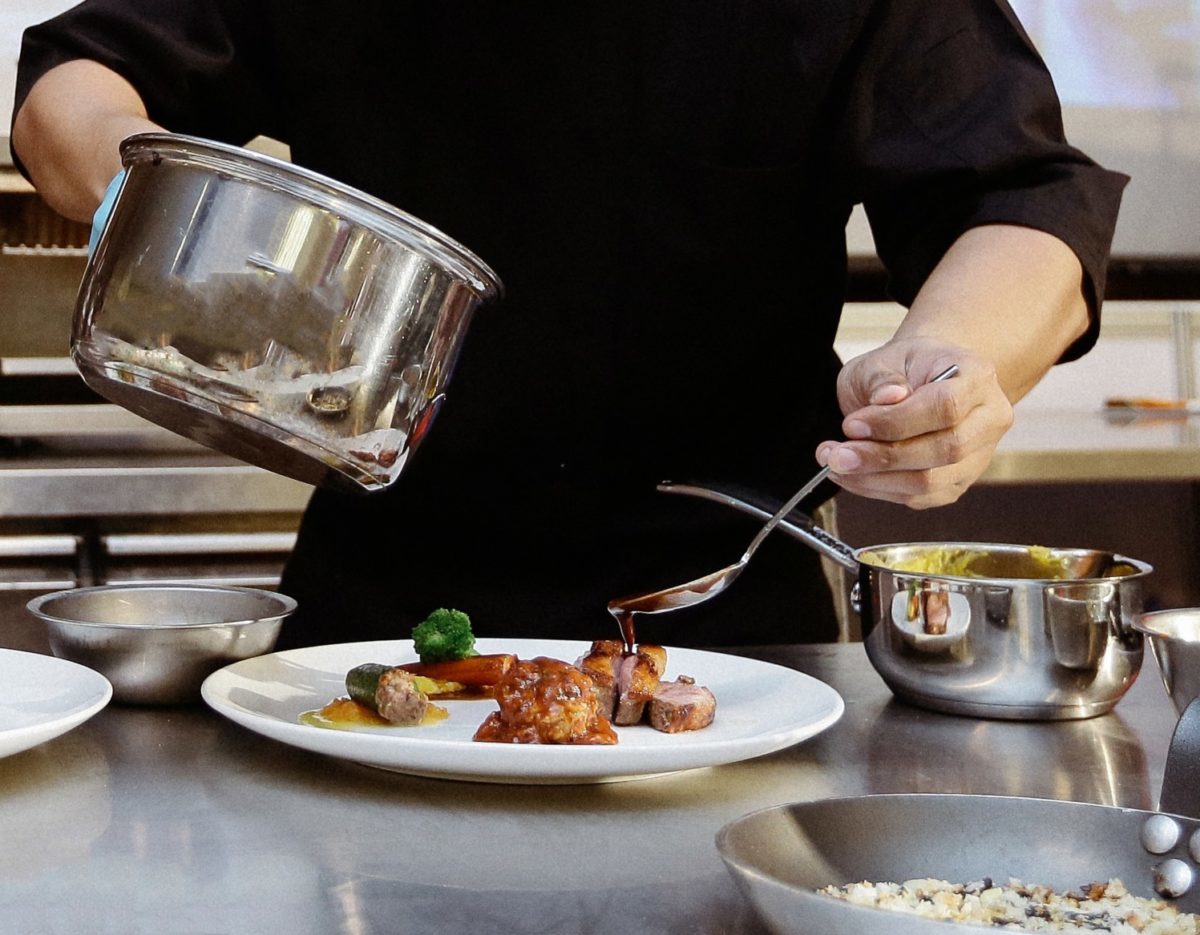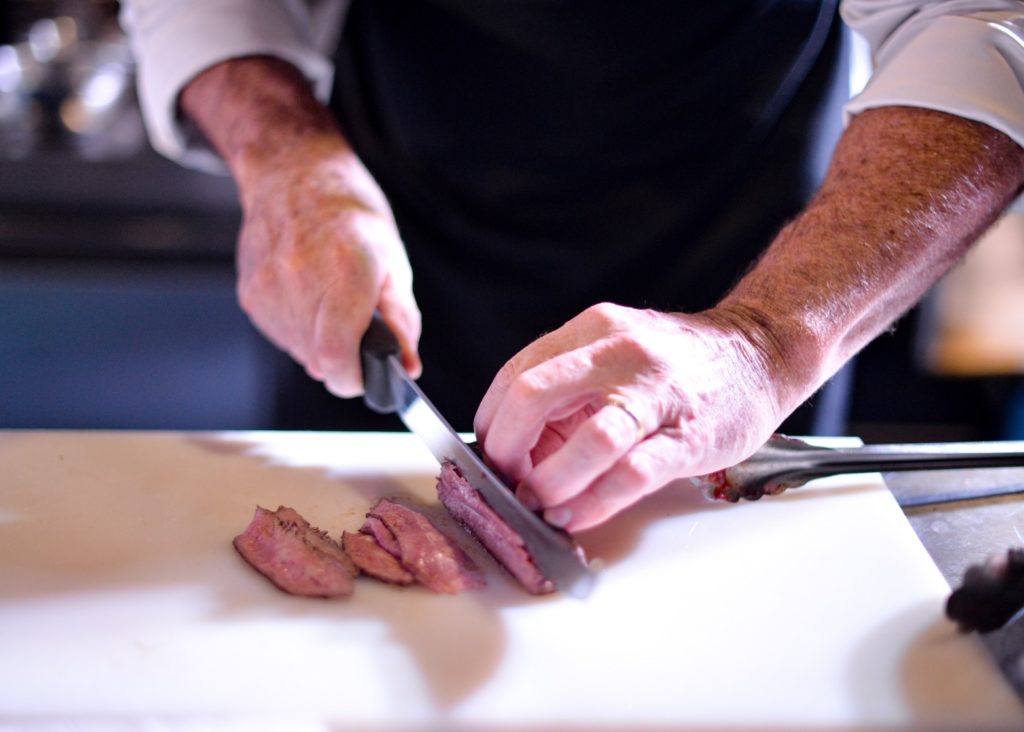Can fine dining be a force for good in the world? Happily, some people are committed to trying to make it so through social gastronomy. Recently, we read about a compelling idea that seems to be spreading. Gourmet restaurants inside prisons around the world, where the inmates staff both the kitchen and the front of the house. And casual eateries where the staff is comprised of ex-convicts. Intrigued? Here are 10 gourmet restaurants around the world that are inside prisons, or that are staffed largely by formerly incarcerated individuals.
Wait – there are Gourmet Restaurants Inside a Prison?
Many people have given a lot of thought through the years about how to solve the pernicious problems of mass incarceration. And how best to help formerly incarcerated individuals build productive lives after their release from prison. One key to the latter is restoring a sense of purpose, dignity and work ethic for people who have been imprisoned. And there’s no better time to start that process than when people are currently incarcerated.
Enter, social gastronomy. To our surprise, we recently learned that some leaders in the world of hospitality as well as the government have been at the forefront of testing new ways to assist in the transition from prison to a productive life post-incarceration.
Join our community
For access to insider ideas and information on the world of luxury, sign up for our Dandelion Chandelier newsletter. And see luxury in a new light.
Specifically, around the world there are several gourmet restaurants inside minimum-security prisons. And there are also several casual dining establishments where former inmates can find work and training that will speed their return to being fully productive members of society.
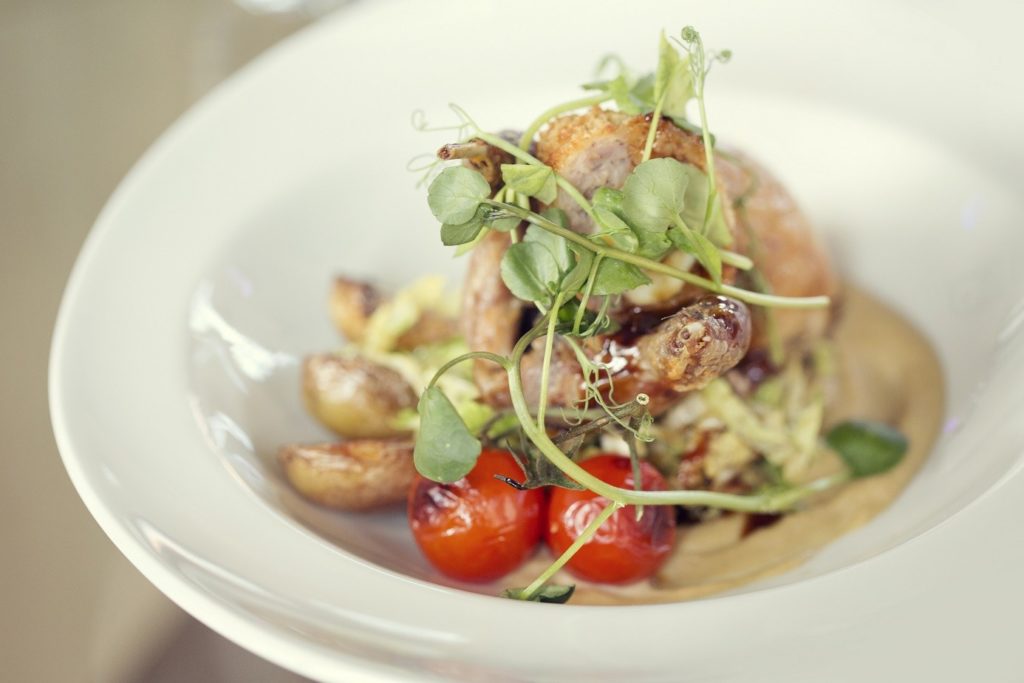
Quail, Scotch egg and vegetables at The Clink, UK. Courtesy Photo.
Done well, both kinds of eateries can be a luxurious win-win. Diners get a great meal and the staff builds new skills that can lead to productive long-term work. It might sound like a pie-in-the-sky liberal dream. But recently the UK released statistics proving that inmates who had participated in such a program while in jail had a significantly lower rate of recidivism than the general prison population.
Social entrepreneurship can work. If you’d like to support to one of these institutions as a diner, here are 10 notable restaurants around the world inside prisons, or that are staffed almost solely by formerly incarcerated individuals.
Fine dining restaurants inside prisons
1. The Clink, four locations in the UK
Within the UK, there are not one but four gourmet restaurants inside prisons. And collectively, they have generated a significant decrease in the rates of recidivism among participants who work at these eateries. The Clink is a not-for-profit organization that partners with Her Majesty’s Prison and Probation Service to operate four restaurants across the country. The flagship “prison restaurant” operates at Brixton Prison, and the eatery consistently ranks in the Top 10 restaurants in London on TripAdvisor.
At locations in Brixton, Cardiff, High Down, and Styal, inmates work up to 40-hours a week and make progress toward gaining their City & Guilds qualifications. Prisoners with six to eighteen months remaining on their sentences serve as volunteers, taking full-time training to reach the required level to succeed in their respective industries.
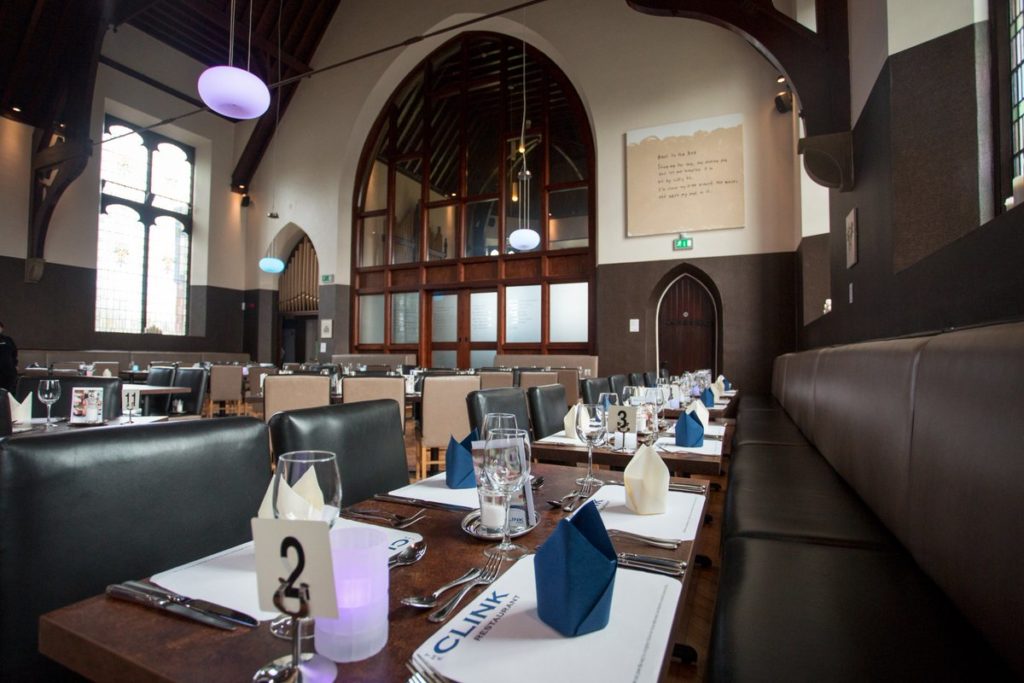
The Clink restaurant
The menus are what you’d expect to find at a stylish modern fine dining establishment. There are vegetarian and vegan options at each location. While there is no alcohol served, there are “mocktails,” organic cold drinks and cold infusions. Plus a gift shop that sells branded merchandise, including a book of poems written by the inmates while incarcerated.
2. InGalera, Milan, Italy
Social gastronomy done well can create a real buzz. At the first gourmet restaurant opened inside an Italian prison, you have to reserve a table up two months in advance. InGalera — Italian for “In Prison” — opened its doors on a trial run inside the medium-security prison of Bollate on the outskirts of Milan. Built in a block formerly used as dormitory for prison guards, it was initially meant to teach some of the 1,200 suitable inmates catering skills that would boost their chances of finding a job at the end of their sentences. Instead, it has become a consistently hot eatery that’s open to the public for both lunch and dinner. The kitchen can accommodate requests for gluten free, vegetarian or vegan dishes. And yes, kids are allowed.

InGalera restaurant. Photo Credit: Gianni Cipriano for the New York Times.
3. The Fife and Drum, Concord, Massachusetts
Located inside the Northeastern Correctional Center in Concord, Massachusetts, you’ll find the restaurant Fife and Drum. The name is a nod to historic Concord, site of the Revolutionary War battle. But this is not a frozen-in-time touristy tavern.
The correctional facility is a pre-release and minimum-security prison on 300 acres of farmland. Much of the produce and herbs the restaurant uses come from its own gardens. The meals are made from scratch, the portions are generous, and reviewers say that the desserts are delicious. The prix-fixe menu costs $3.21. The Fife and Drum offers culinary training for inmates, a program run for almost 25 years by Eddie Jacobs, a trained instructor and former restaurateur. It’s currently the only prison restaurant open to the public in the United States.
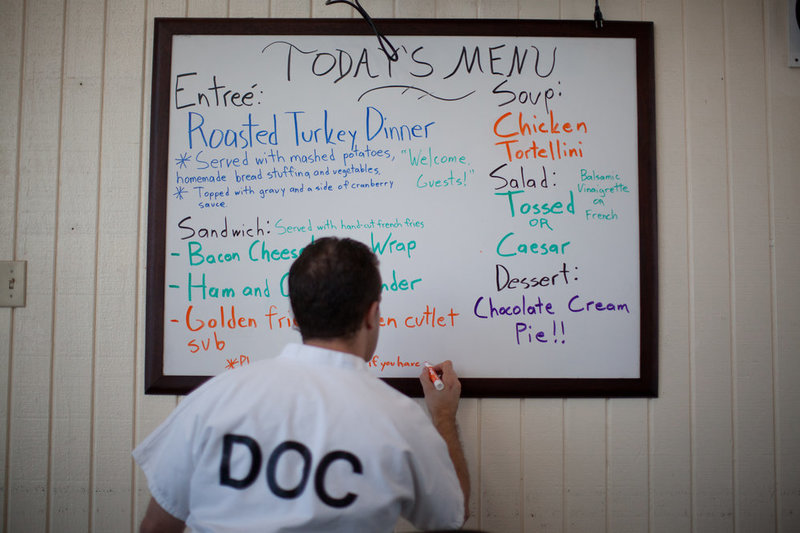
The Fife and Drum restaurant at the Concord, Massachusetts correctional facility. Photo Credit: NPR.
4. Restaurant Idlanathi, Cape Town, South Africa
Based on our research, the most controversial eatery on this list is the one located in Pollsmoor Maximum Security Prison, in the upscale suburb of Tokai in the Constantia Valley on the outskirts of Cape Town.
The facility is home to Restaurant ‘Idlanathi’ (which means ‘eat with us’). The casual eatery serves breakfast and lunch, and the reviews on the quality and value for the price are quite good. Breakfast options include a farm-style breakfast, a budget breakfast and a healthy breakfast. For lunch, there are sandwiches, fries, grills and traditional hot meals like curries, stews, and lasagna. Nelson Mandela was once an inmate of this prison—so along with a good meal, you will be getting much closer to a vital chapter in world history.
The controversy stems from the conditions at the prison, which have been judged by the South African judiciary as unacceptable. The facility has been cited for overcrowding and unsanitary living conditions. The ethics of whether or not to support a program like this one, which is helping inmates gain valuable skills but not translating into the daily experience of the prison population, is one you’ll have to wrestle with if you decide to go.
5. Interno, Cartagena, Columbia
By all appearance, restaurant Interno looks like a typical restaurant in a tropical paradise. The decor is hot pink, with botanical murals and potted foliage surrounding rustic-chic wooden tables. The giveaway that there’s something different going on, though, is the two barred gates at either end of the dining area. The one by the entrance is open. The other is locked, except for a opening through which kitchen staff can pass plates of food.
Almost all the staff at Interno are inmates at Cartagena’s San Diego prison. The restaurant – the first in the world to be located inside a women’s prison – provides the staff with valuable skills to help find work when they are released.
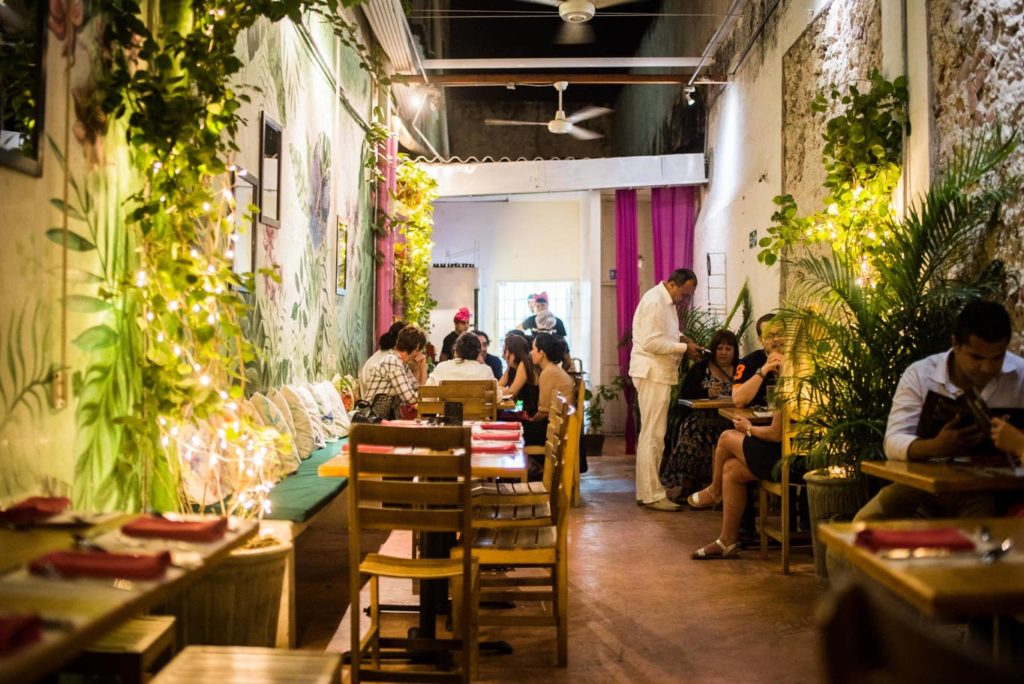
Restaurante Interno, Cartagena, Columbia
Restaurants largely staffed by previously-incarcerated individuals
1. Edwins, Cleveland, Ohio
If you eat at Edwins, the waiter who serves you will probably have been previously incarcerated. The Cleveland restaurant, which serves upscale French cuisine, makes employing former prisoners part of its mission. The restaurant’s owner and parent, the Edwins Leadership & Restaurant Institute, provides a six-month training course for former prisoners. Students work nights to learn skills that can lead to full-time jobs in the hospitality business.
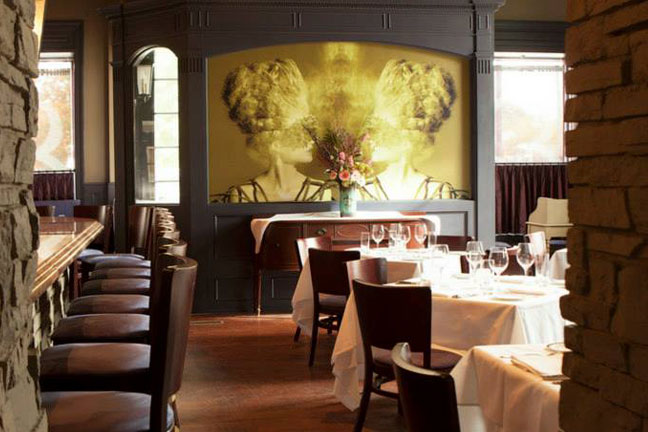
Edwins in Cleveland, Ohio
The success of the restaurant led to the opening last year of a butcher shop.
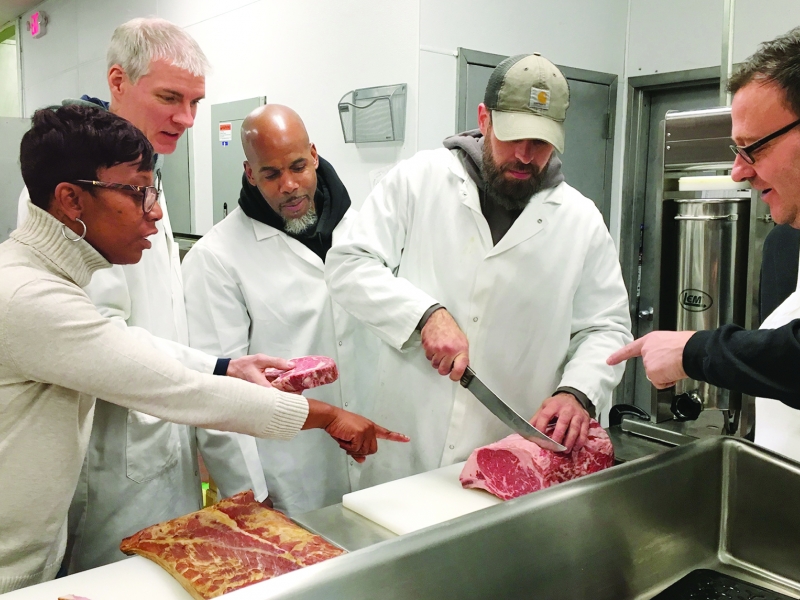
Social gastronomy in action at Edwins Butcher Shop in Cleveland. Photo Credit: Crain’s Cleveland Business
2. All Square, Minneapolis, Minnesota
All Square is a grilled cheese restaurant staffed largely by people who were formerly incarcerated. Its mission is providing employment and training to people who are often shut out of meaningful work because past bad behavior.
Two years ago, Emily Turner quit her job as a U.S. Housing and Urban Development attorney to open All Square. Having previously worked on prisoner reentry, housing segregation, and fair housing, she wanted to find a truly hands-on way to make a difference. To get a job at the restaurant (which is a not-for-profit), you need a criminal record. On Mondays, when the restaurant closes, employees take classes in entrepreneurship and law.

All Square Grilled Cheese Restaurant in Minneapolis, Minnesota. Courtesy Photo.
The restaurant’s board includes a CEO who was a five-time felon, a community organizer who was born in prison and later served time, and a successful businessman who was wrongly convicted. Together, they planned a 13-month program for others with criminal records (including some who haven’t been to prison, because just an arrest record can cause problems with employment). Employees, called fellows, spend 30 hours each week working in the restaurant, and are also paid for 10 hours of structured coursework.
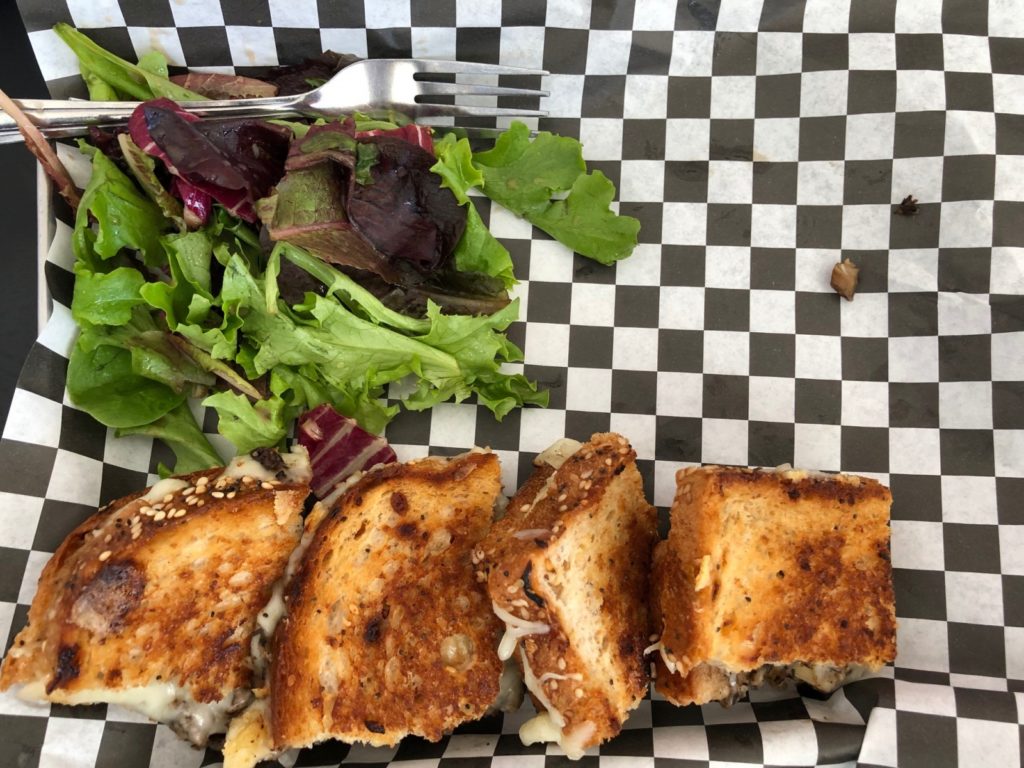
The specialty at All Square Grilled Cheese Restaurant in Minneapolis, Minnesota.
3. Cafe Stepping Stone, Cartagena, Columbia
Another successful project in social enterprise is Cafe Stepping Stone in Cartagena. Located in the Getsemani neighborhood, the “second historic walled city” within Cartagena, the enterprise provides training programs for disadvantaged indigenous and Afro-Colombian young people. The staff is not necessarily comprised of those who have been incarcerated – many are economically disadvantaged, though, and the skills they learn can lead to lifetime employment.
The restaurant is famous for its brunch: avocado toasts, fresh juices, and flat white coffees. It serves a great lunch, too: think meze platters and falafel burgers.
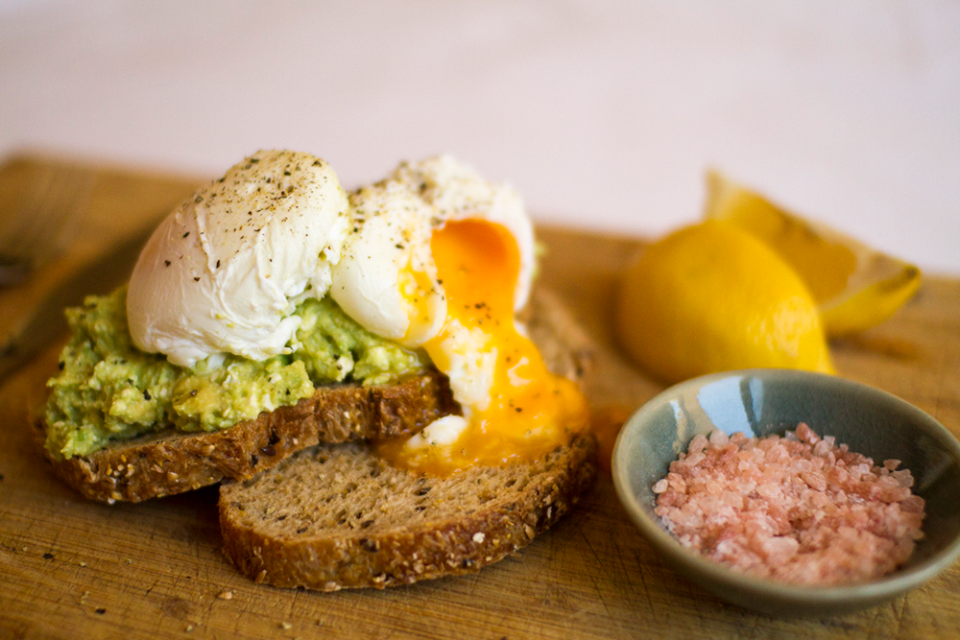
Cafe Stepping Stone, Cartagena, Columbia
4. Café Momentum, Dallas, Texas
acclaimed Dallas chef’s new restaurant to enjoy octopus, pork loin and caviar prepared by teenage boys and young men who have served time in a local juvenile detention facility. The restaurant’s staff is comprised almost entirely of nonviolent juvenile offenders recently released from Dallas County Youth Village.
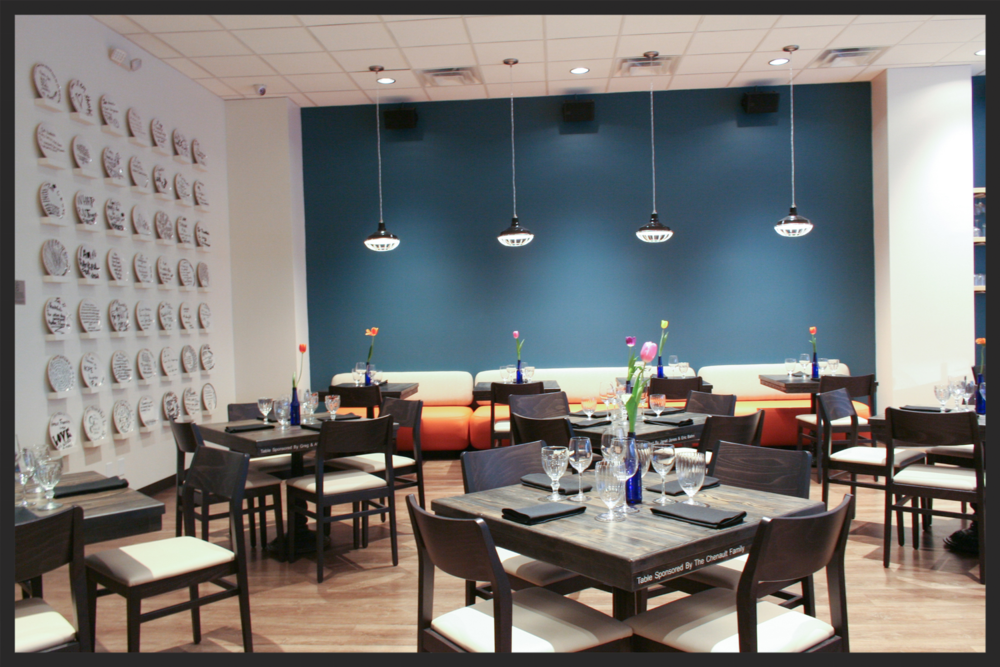
Cafe Momentum, Dallas, Texas
5. Drive Change
Within the world of social gastronomy, not every eatery staffed largely by formerly incarcerated individuals is a restaurant. One that caught our eye began as a food truck.
Drive Change started as a food truck (called the “Snowday Food Truck”) that employed young kids who had been incarcerated on Rikers Island (which at the time took inmates as young as 16). It’s founder, Jordyn Lexton, was an English teacher at Rikers Island High School who wanted to make a real difference in the lives of his students by training them for bright futures in the culinary arts industry.
A couple of years ago, the organization received major funding and adopted a new business model that includes an industrial kitchen where each year, 36 Fellows can complete their culinary arts training. Drive Change also now partners with food businesses committed to an equitable workplace culture.
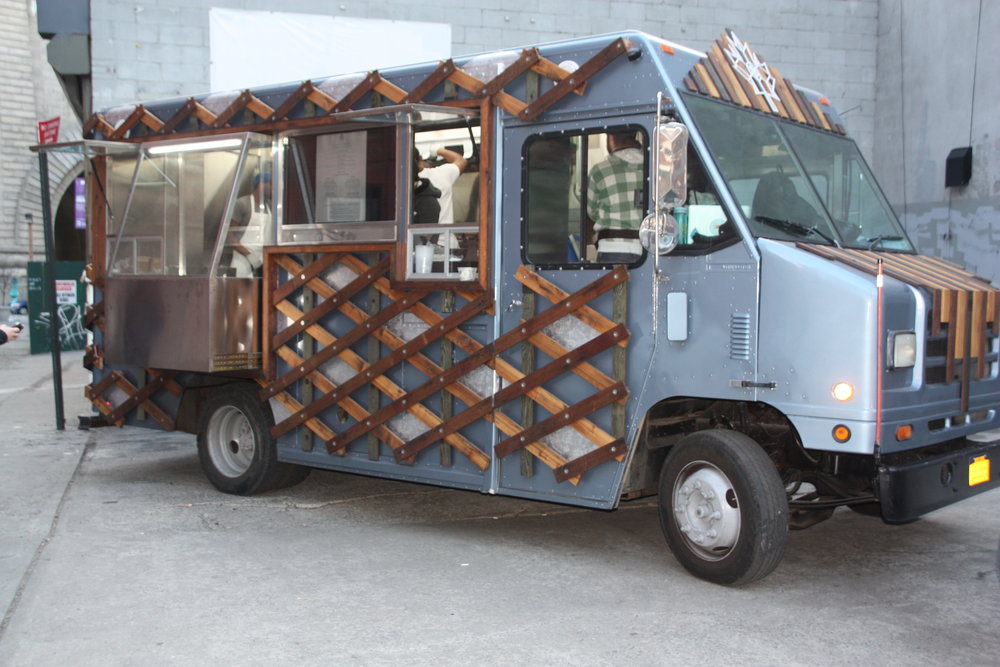
Social gastronomy on wheels: the original Drive Change “Snowday” Food Truck. Photo Credit: Queens Ledger.
Social gastronomy as a force for good
That’s it – ten examples of gourmet restaurants inside prisons, eateries staffed largely by formerly incarcerated individuals, and proof that social gastronomy may be reaching critical mass. What do you think? Are you booking a table? Personally, we have our eyes on those cheese sandwiches at All Square.
join our community
For access to insider ideas and information on the world of luxury, sign up for our Dandelion Chandelier newsletter here. And see luxury in a new light.
Join our community
For access to insider ideas and information on the world of luxury, sign up for our Dandelion Chandelier newsletter. And see luxury in a new light.

